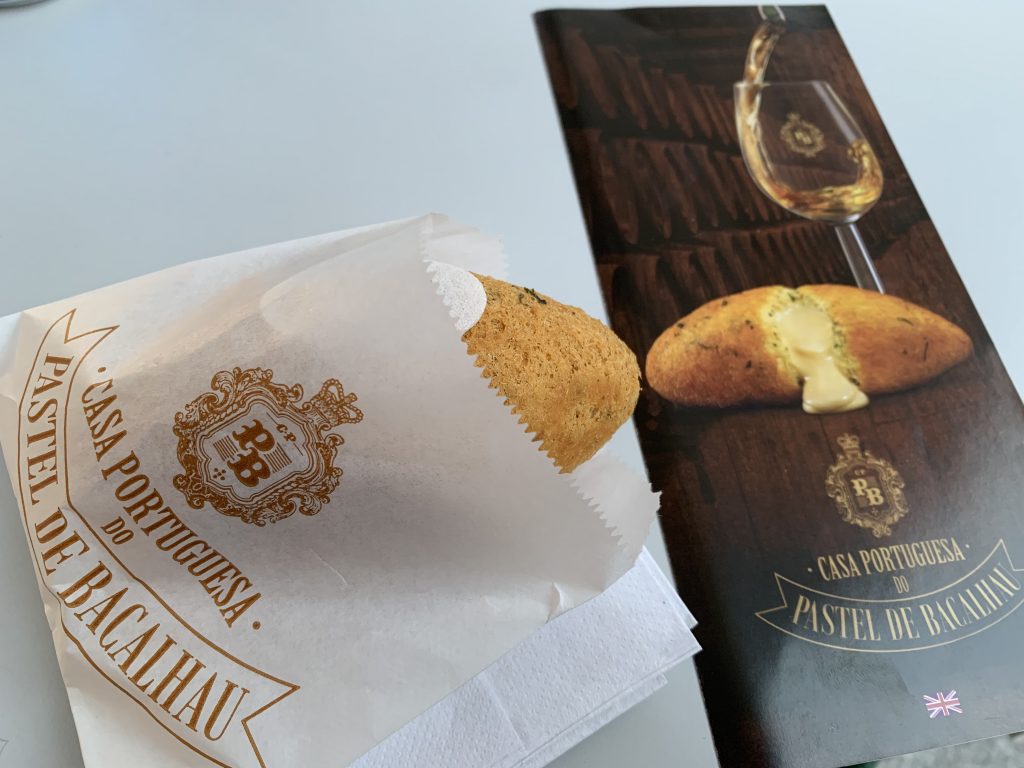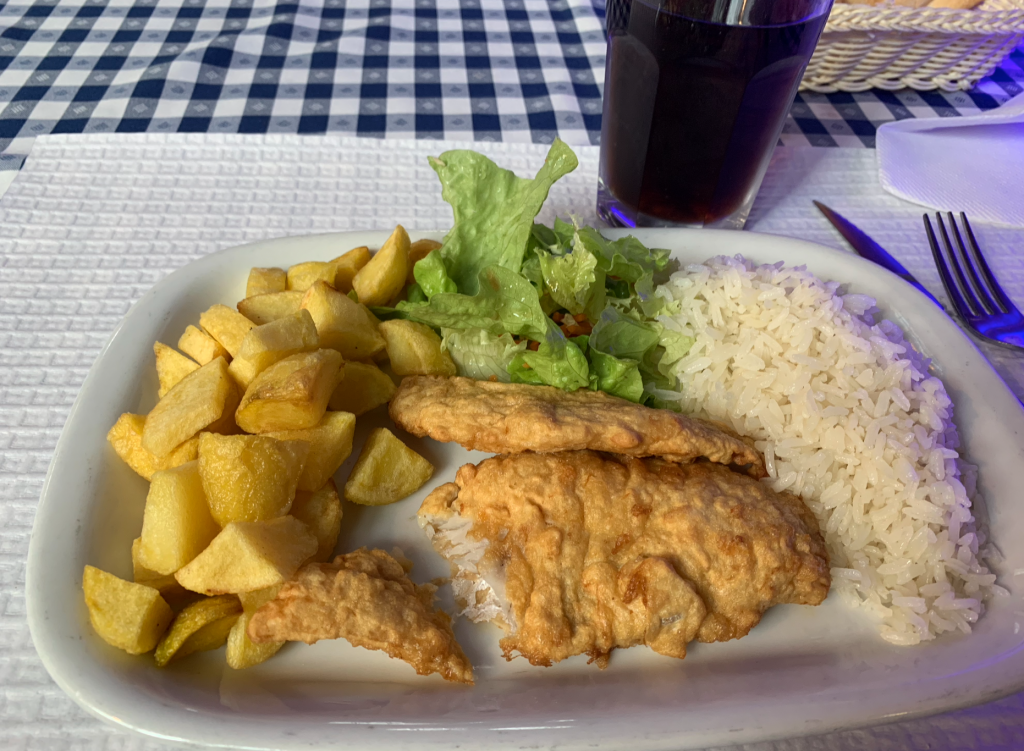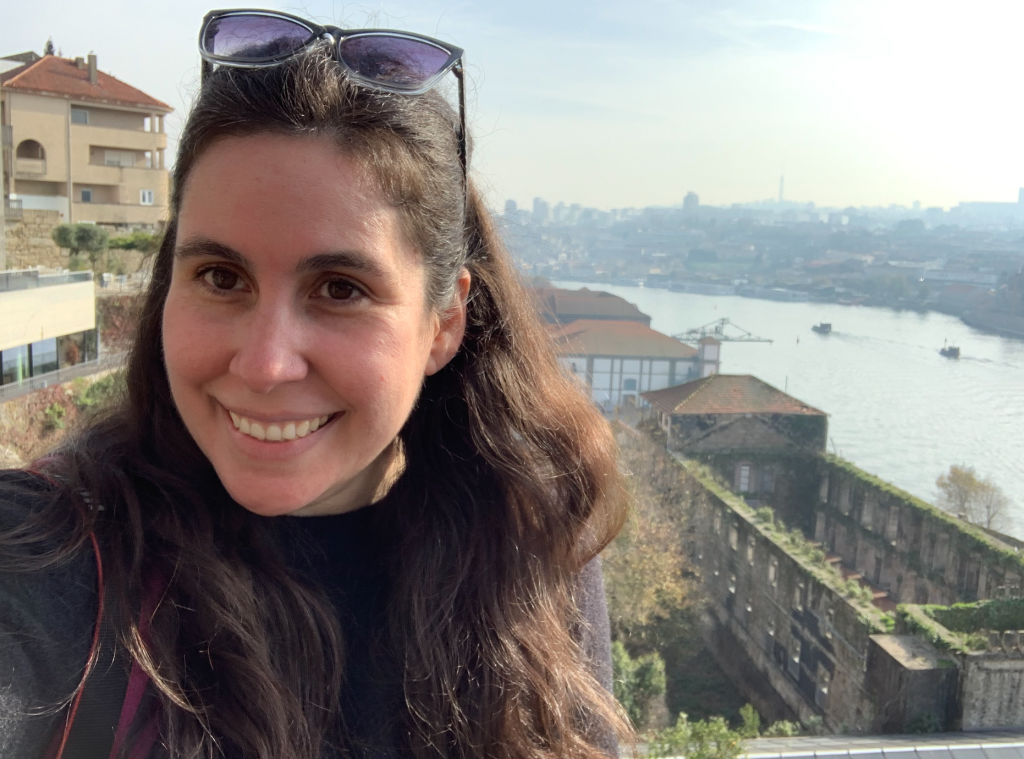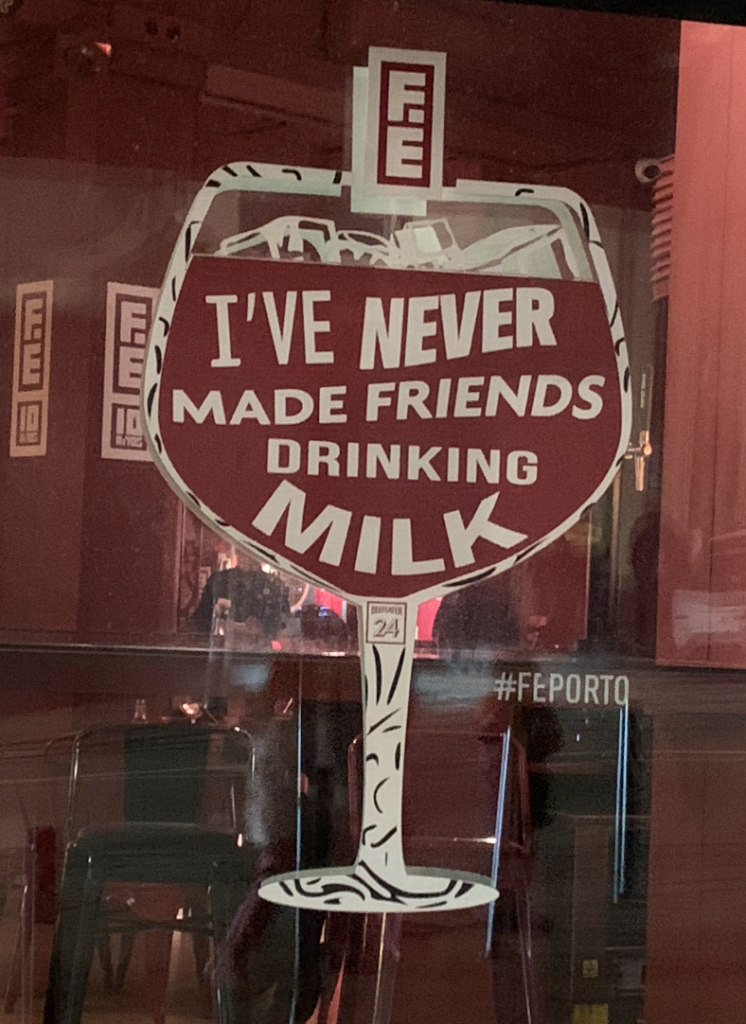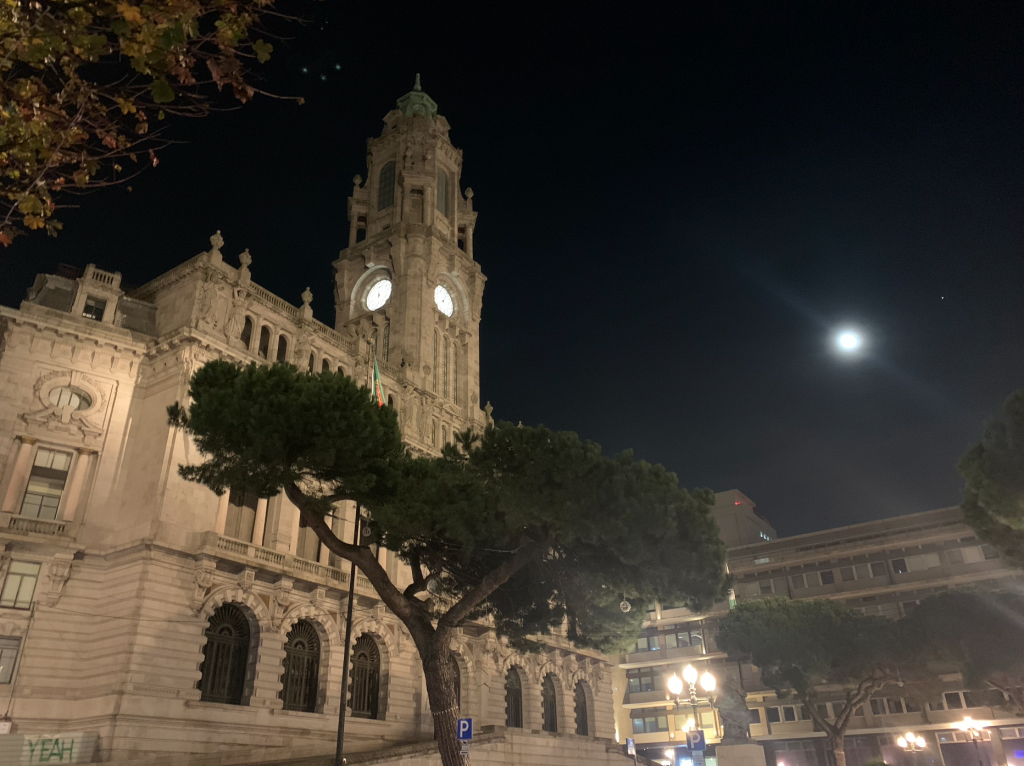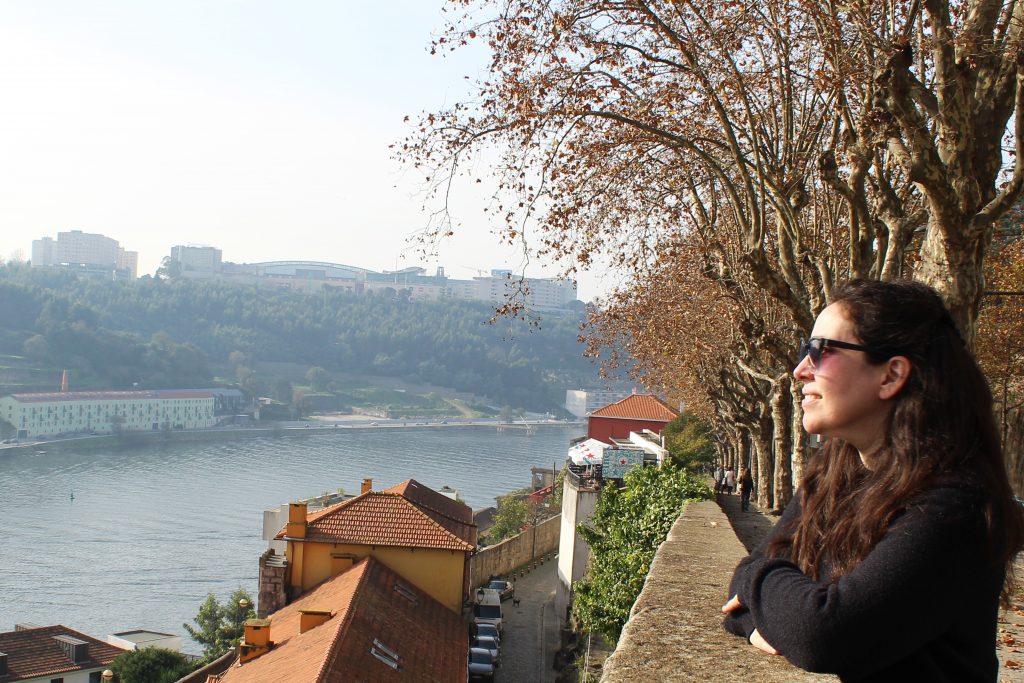
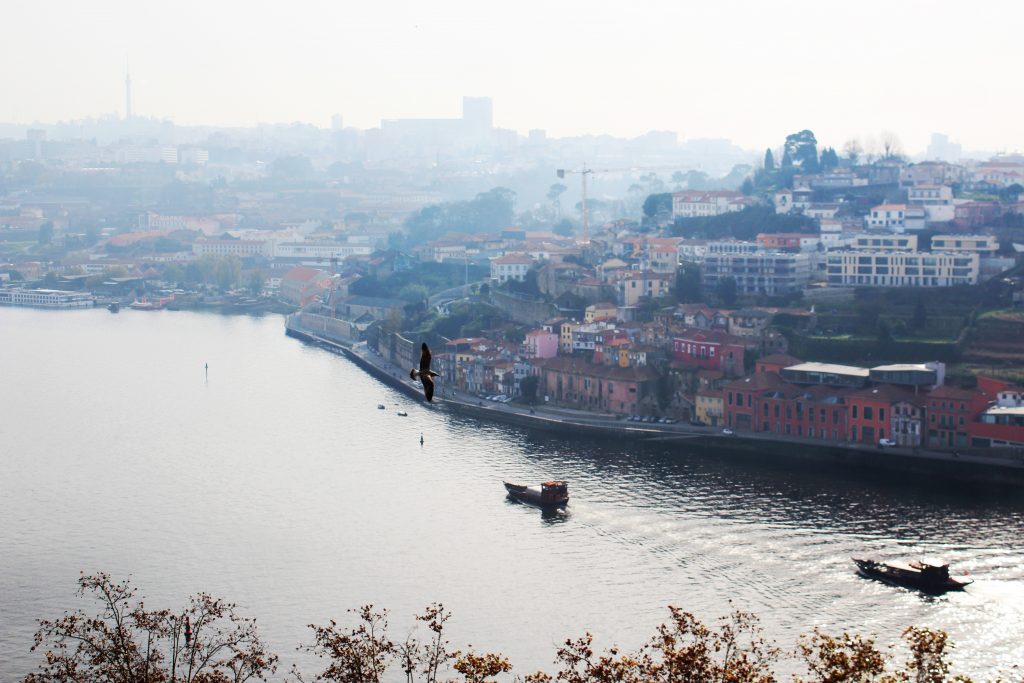
Porto is the second largest city in Portugal after Lisbon. As a tourist, this city was more appealing to me, it has an old town feel. 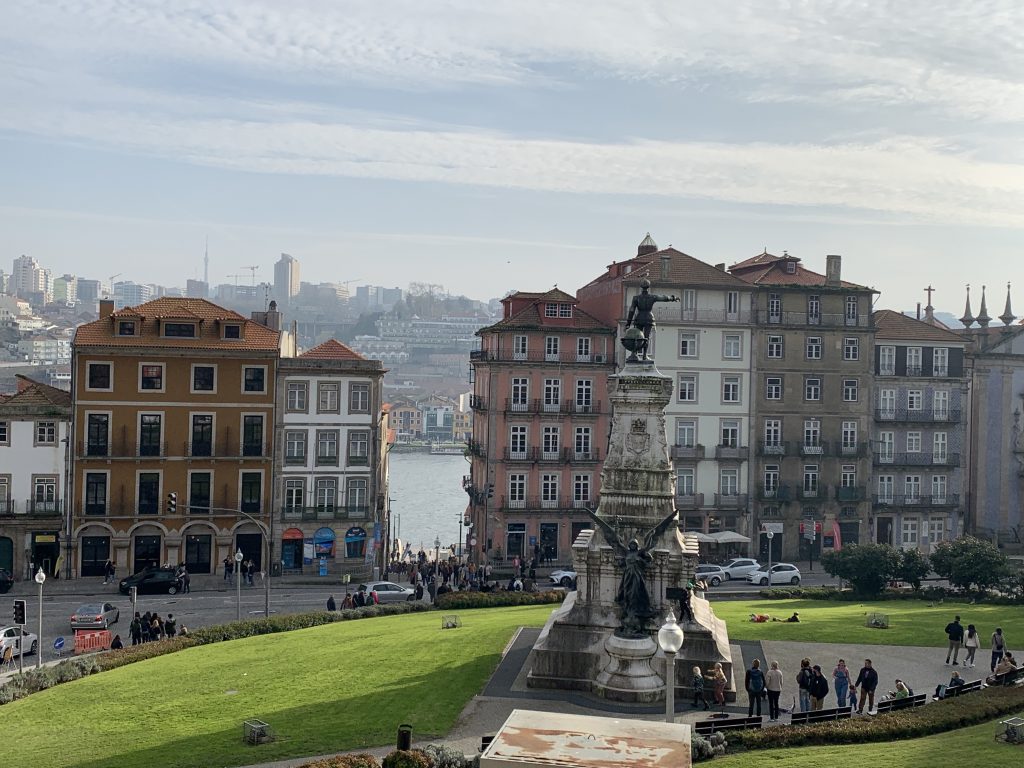

The Douro river allows for a nice walk… the surface is flat and there is a nice breeze. There is a trolly near the river (it is more expensive than the normal buses) but it gives a nice break. 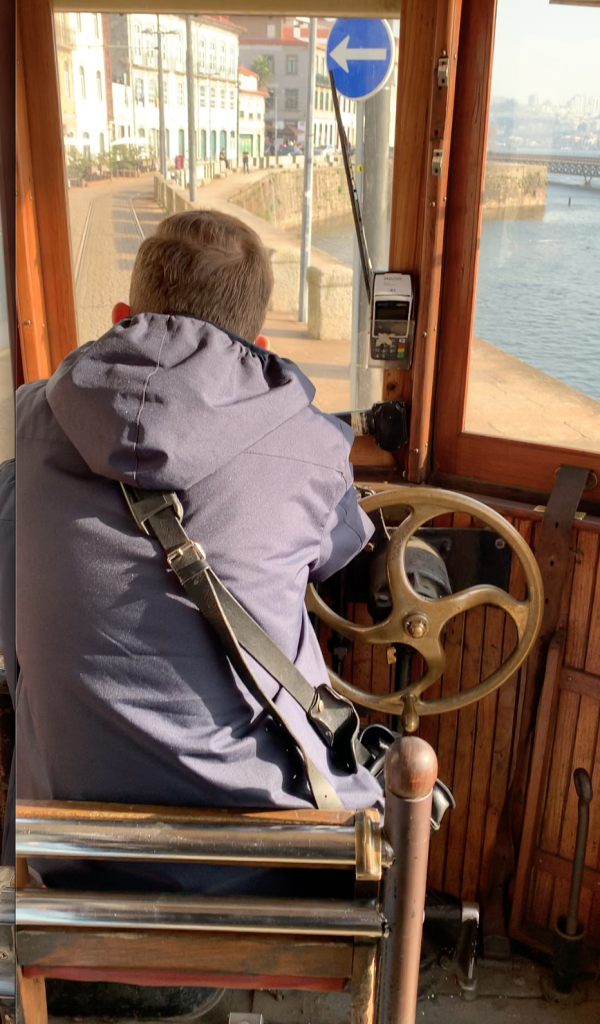
The weather in mid November was wonderful, not hot or cold.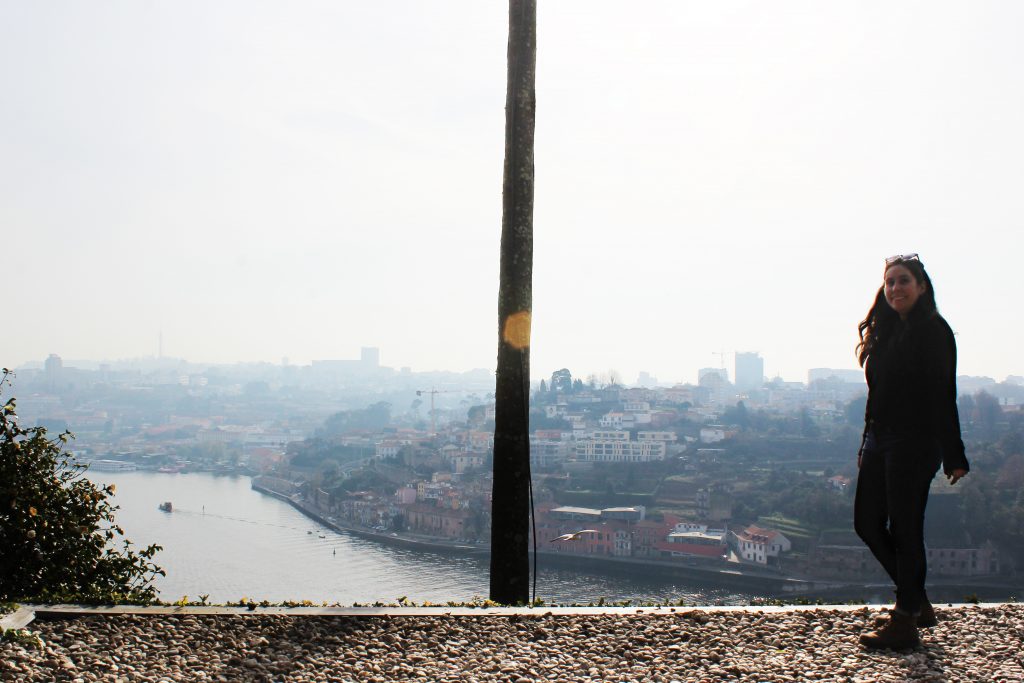
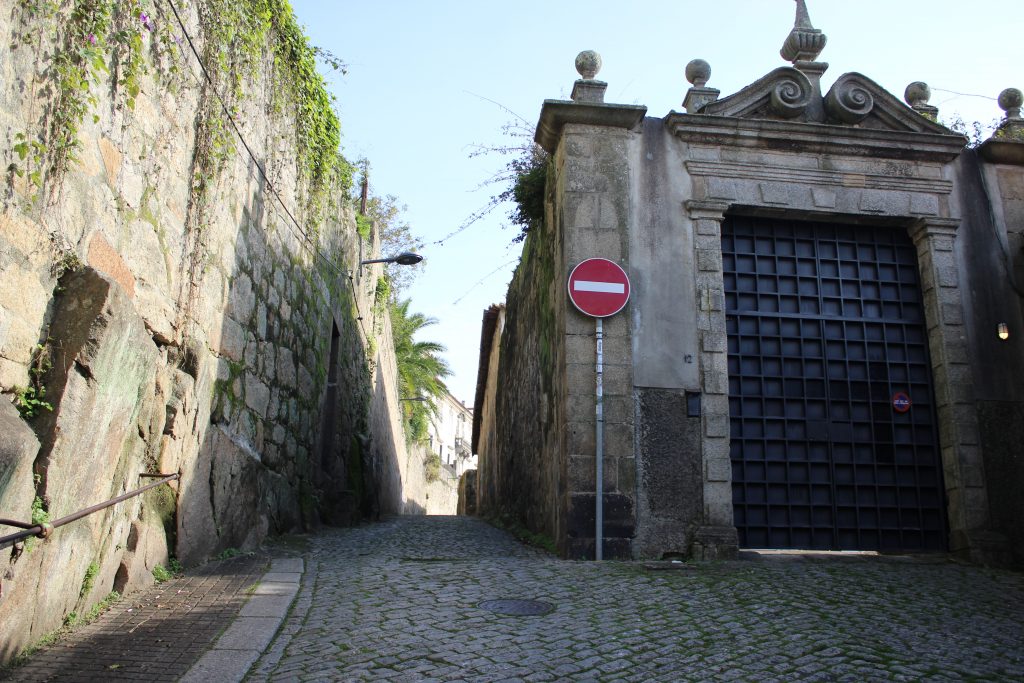
During my walk I found certain animals. This black cat, was too friendly, he (I am just assuming) followed me for a couple of blocks. 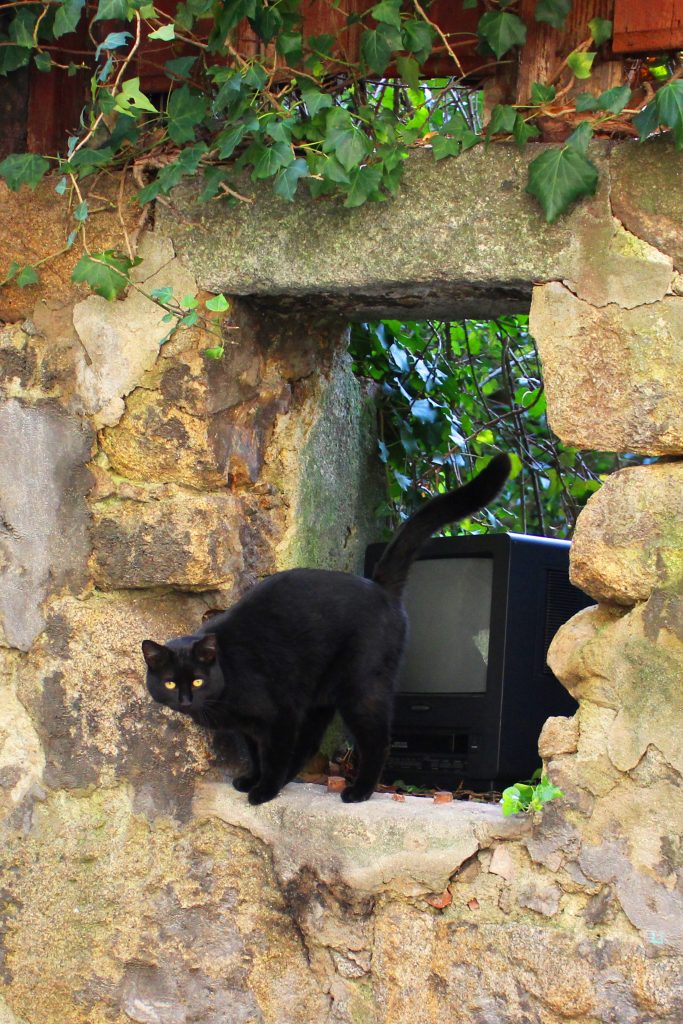
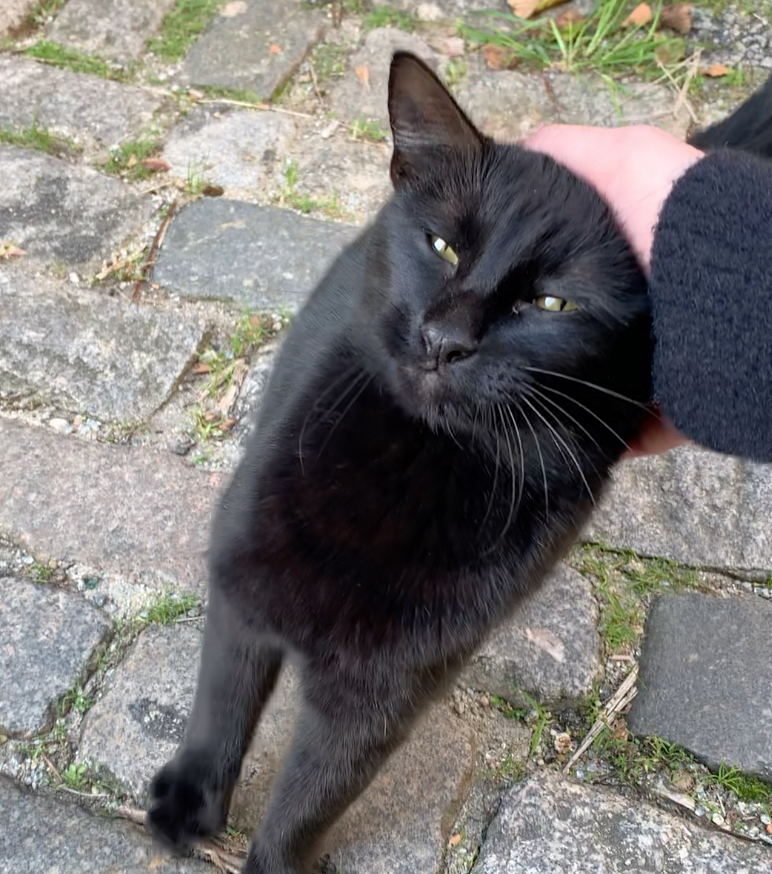
In a park I found this gorgeous ruster. There different kinds, but I thought the colors of this one were beautiful.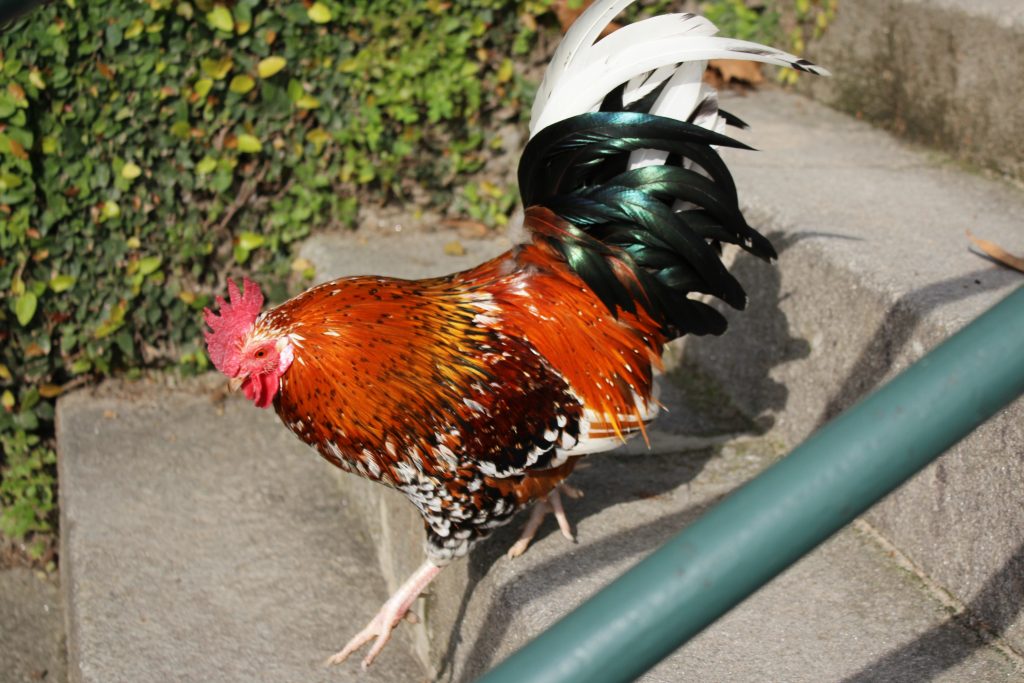
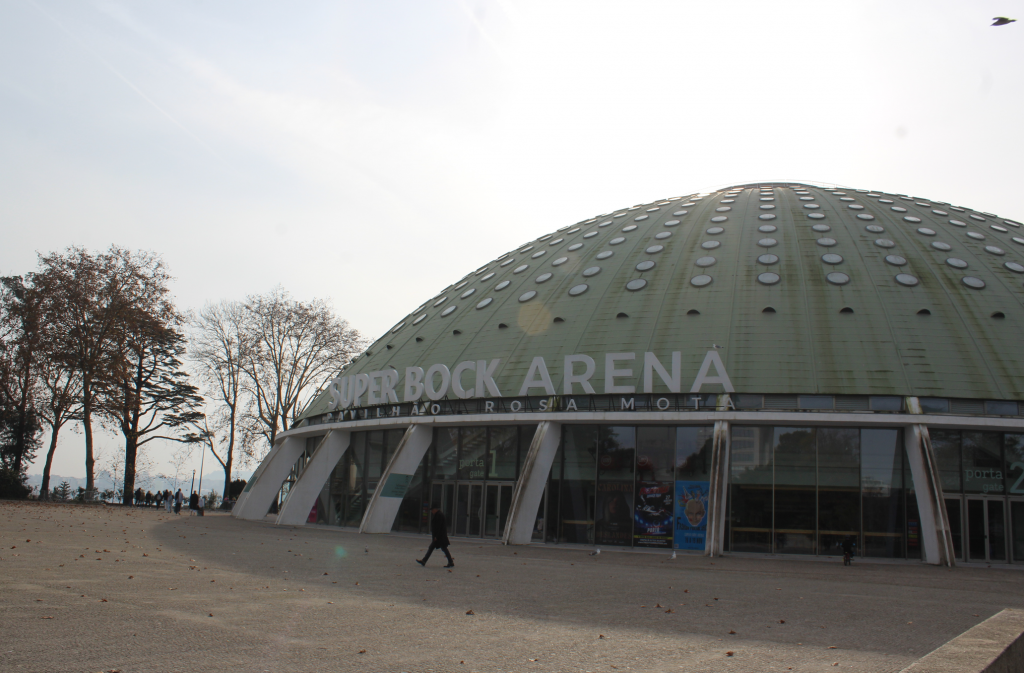
Around the Super Rock Arena…. there were many peacocks.
I went there because of the architect José Carlos Loureiro was a prominent figure in the modernist style. The bird view of this building is more attractive than a walking view. 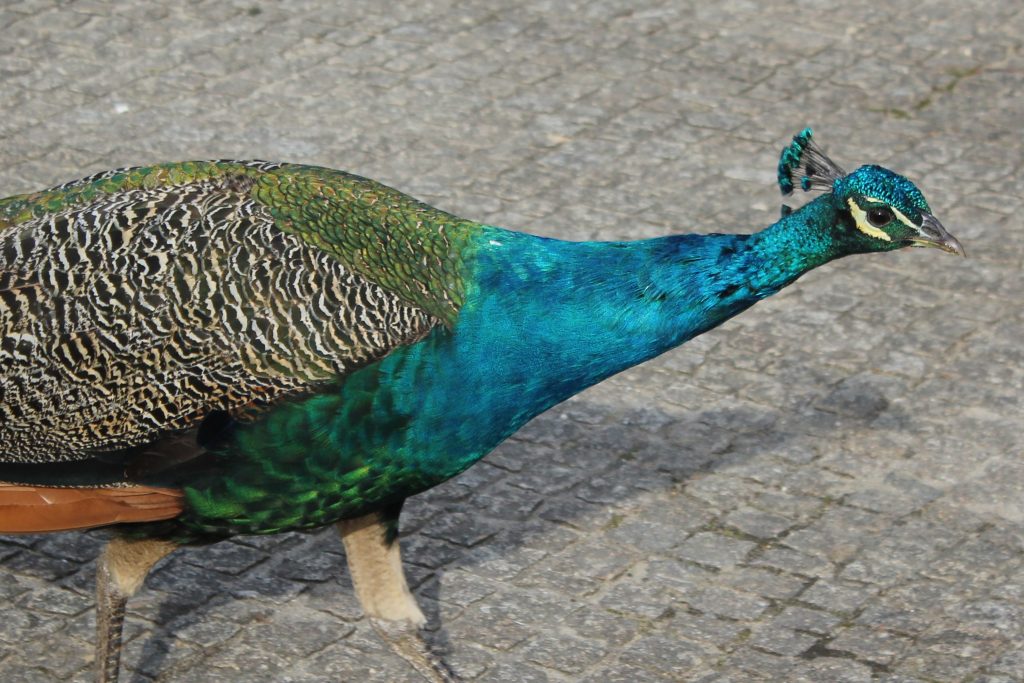
The birds were pretty friendly.
The Center of the city has small streets, the houses are narrow and long. There are no front yard.
What I find very interesting is that in South America, during our republic period, we copied this type of construction because it was the modern style. So at times it feels like been at home.
The city felt safe at night, at least where most of the tourist are. 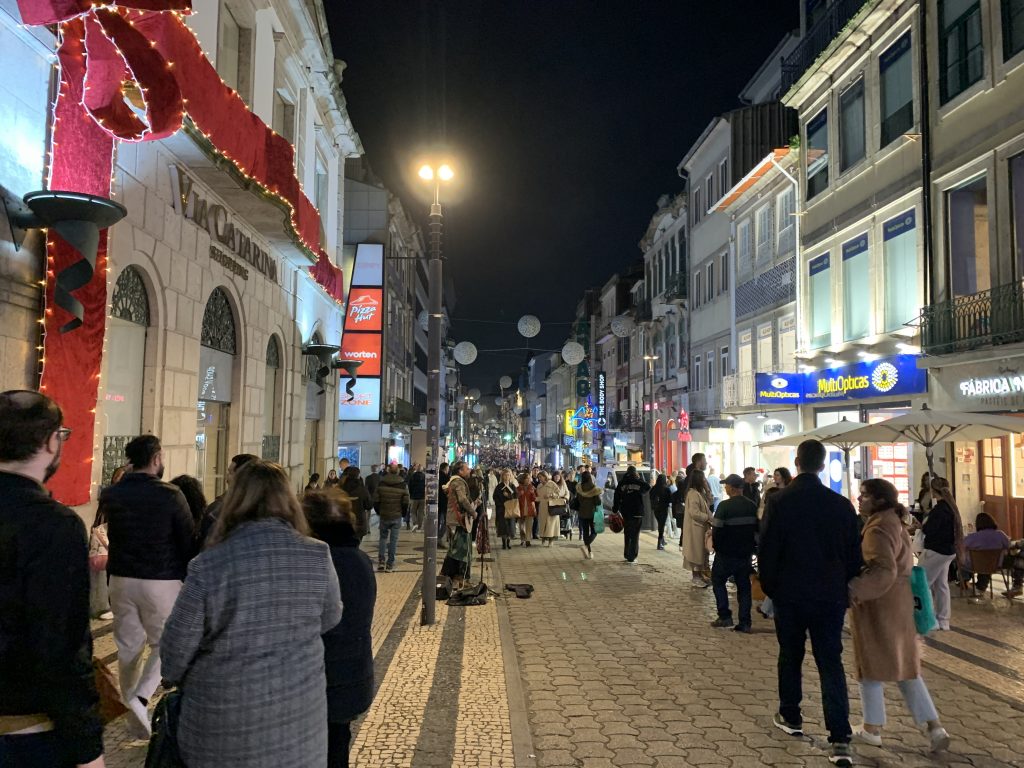
I found a market around 7pm….oysters and wine…. it was delicious. 
Capela de Armas
The construction of the present building began at the end of the 18th century, when the Brotherhood of Souls and Wounds of Saint Francis moved from the Monastery of Santa Clara to the Chapel of Santa Catarina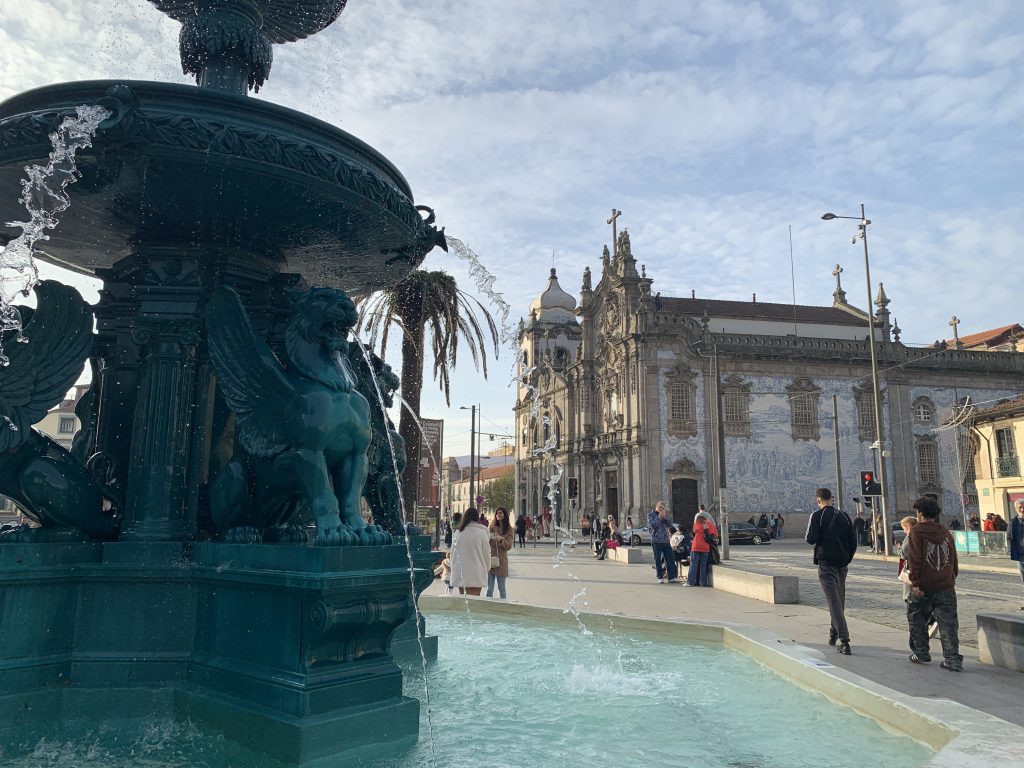
The chapel is covered by 15,947 azulejo tiles. The tiles were designed by Eduardo Leite and were made by the Fábrica de Cerâmica Viúva Lamego, in Lisbon. They represent the lives of Saint Francis of Assisi and Saint Catherine, notably his death and her martyrdom.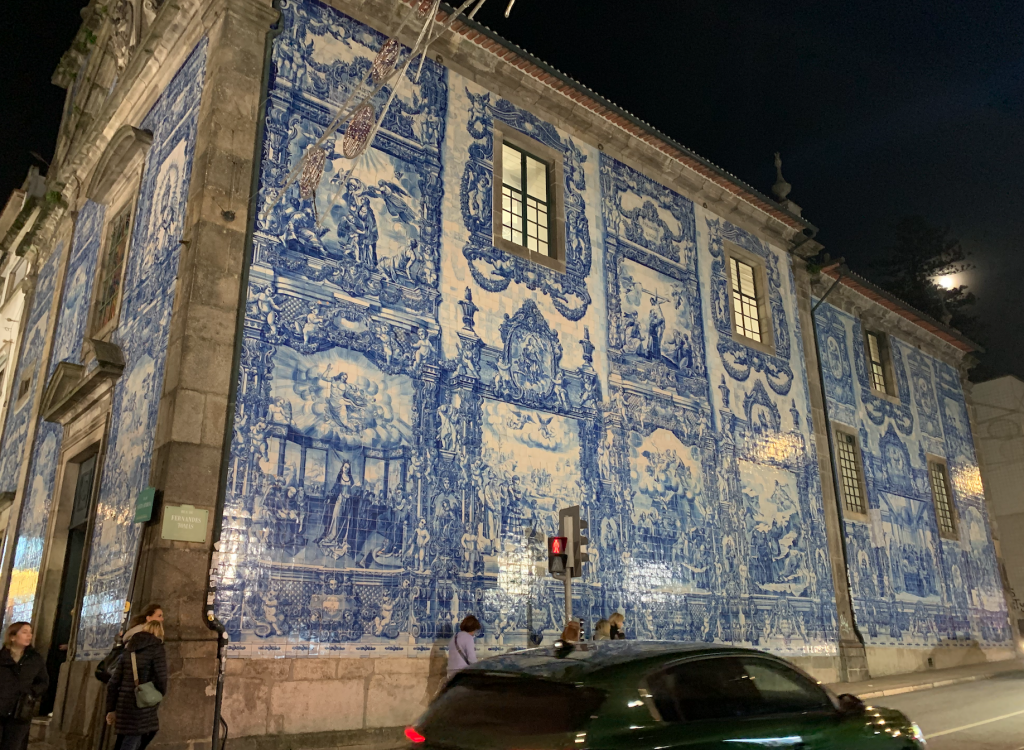

The interior of the church was in a neoclassical style. The decorative details were done in wood and gold paint. 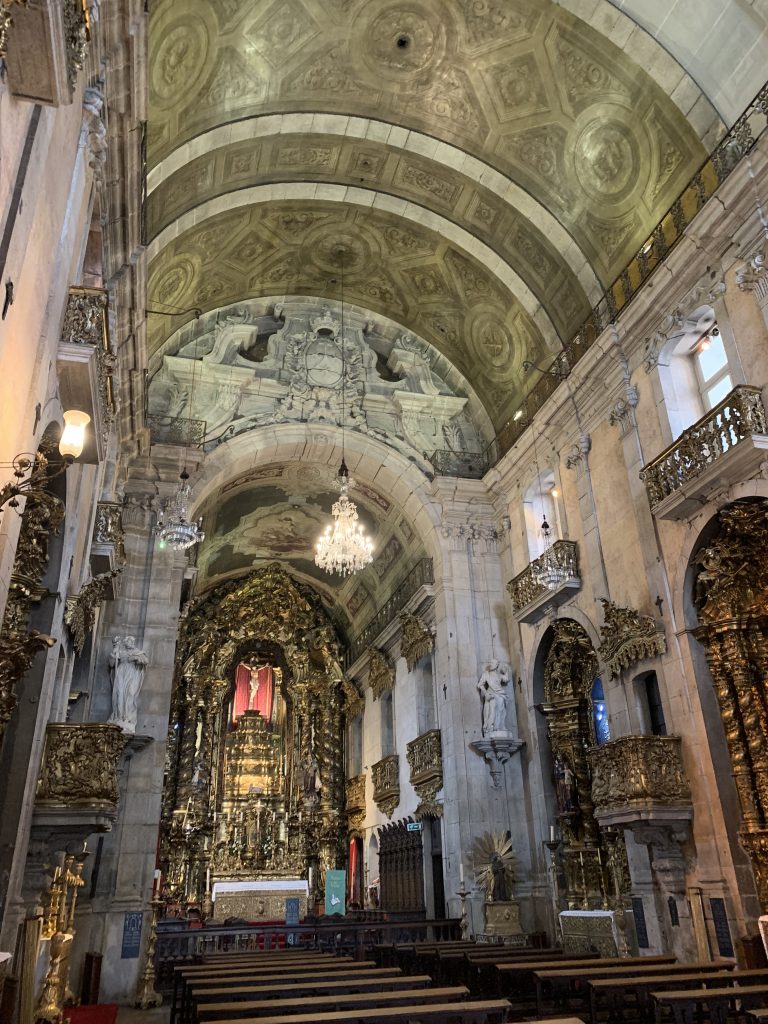
Something peculiar on this church is the “hidden house” between the Church of Carmelitas and the Church of Carmo. Is the narrowest house in the city.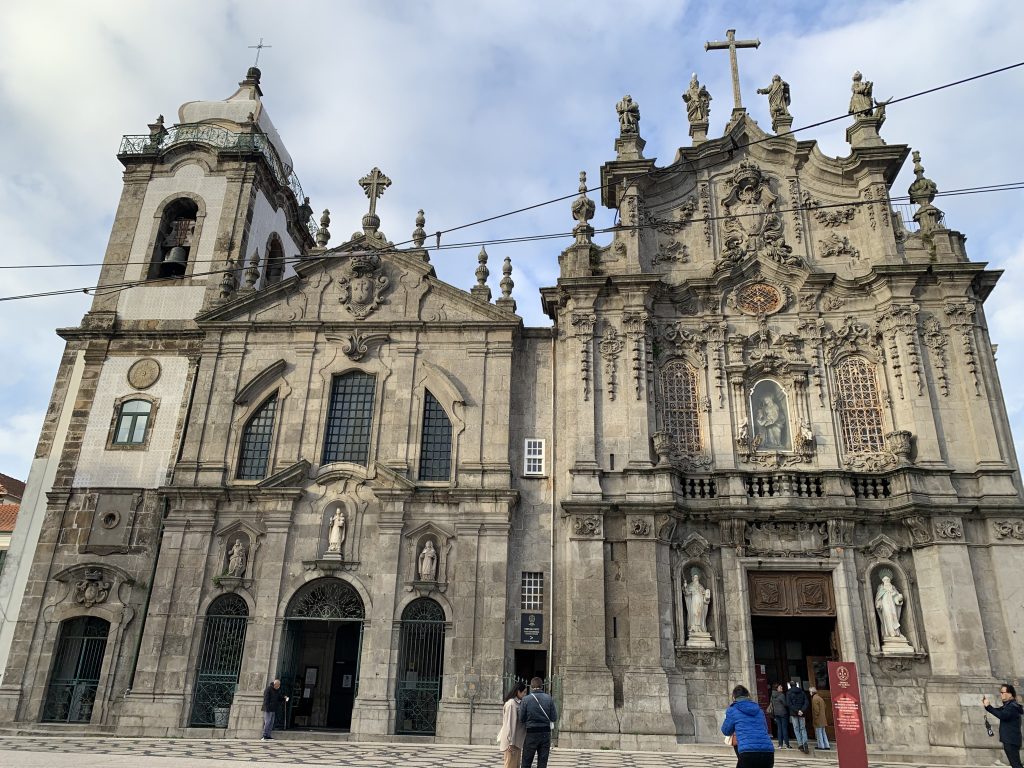
The hidden house is right in the center, with the two rectangular windows.
There wasn’t a specific purpose for its construction. During the French Invasion in 1807 it was use for private meetings.
The church also has catacombs (you can see the human remains behind a glass on the floor).
The reliquary display was peculiar… their display is always so creepy. 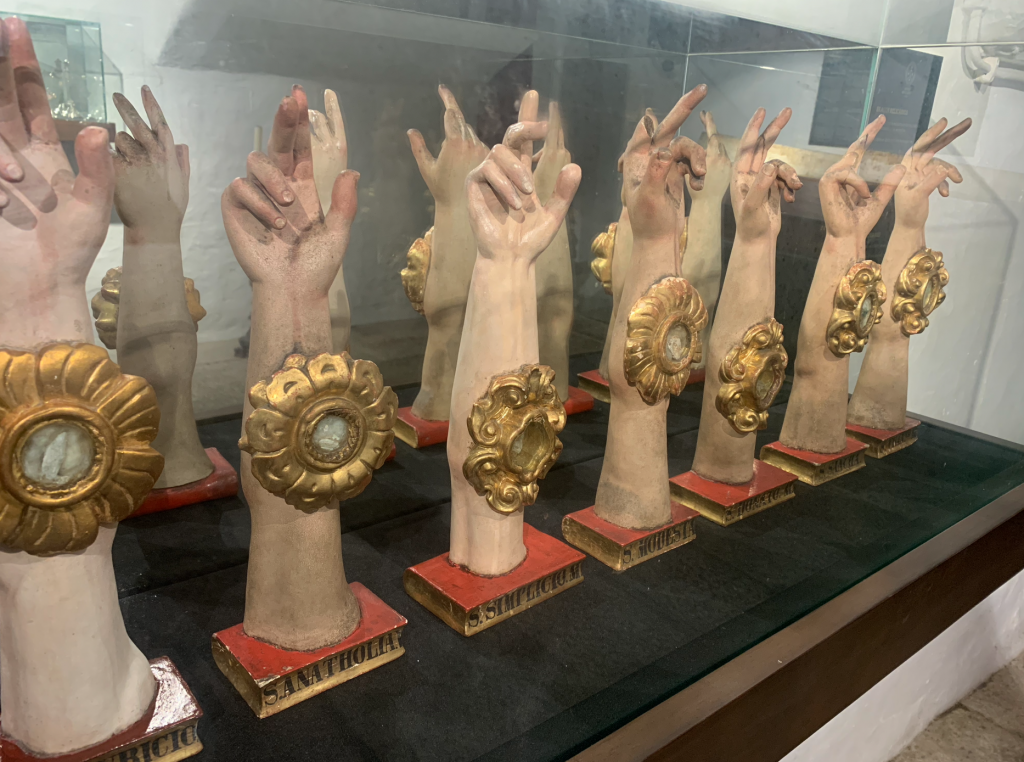
Sister Maria de Jesus died in 1796. Years later the body was moved and they realized that she had been mummified, now she is for display. 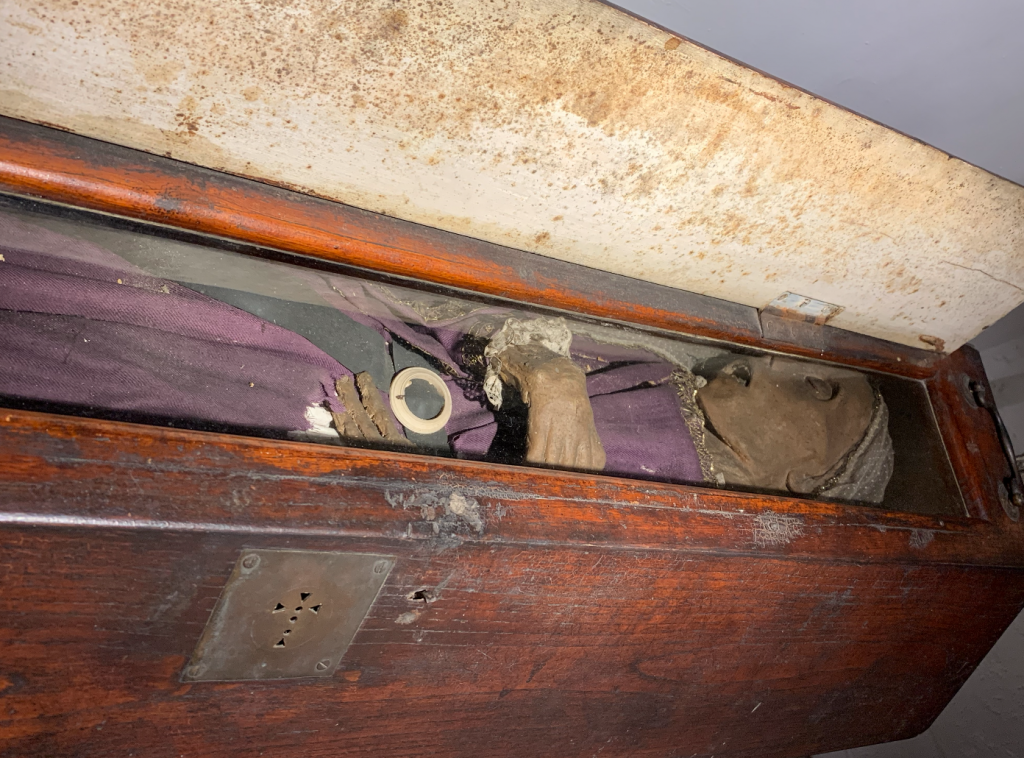
Church of Saint Francis
Saint Francis church is the most prominent Gothic monument in Porto. It is also declared a World Heritage Site.
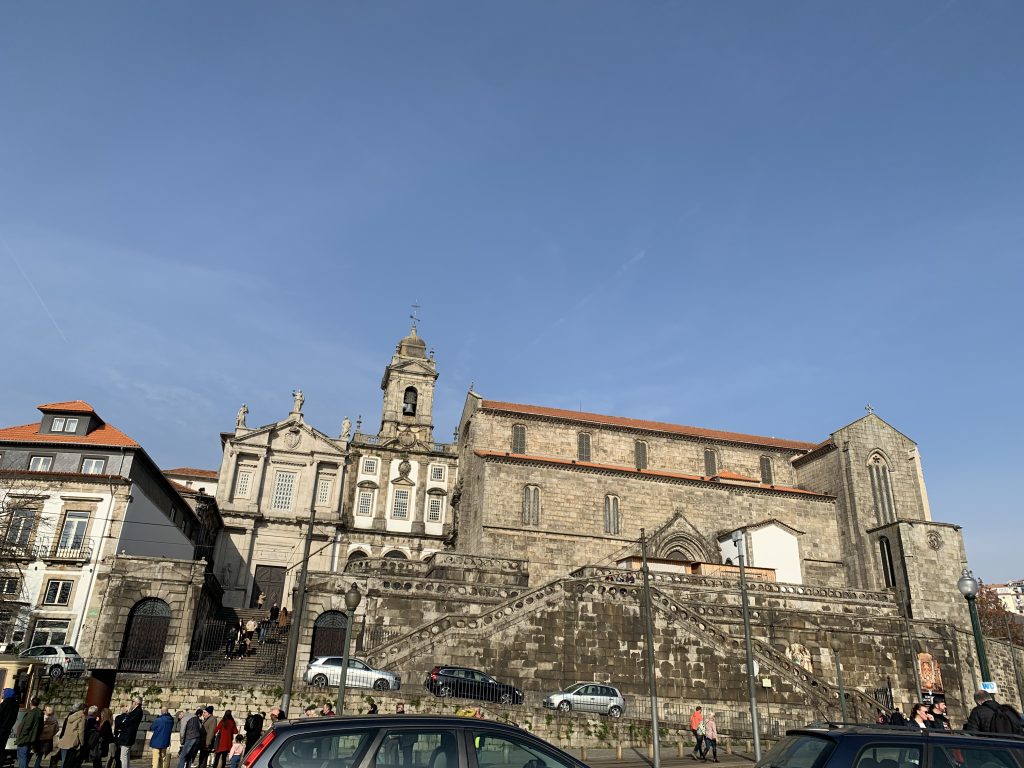
The structure was finished around 1425. 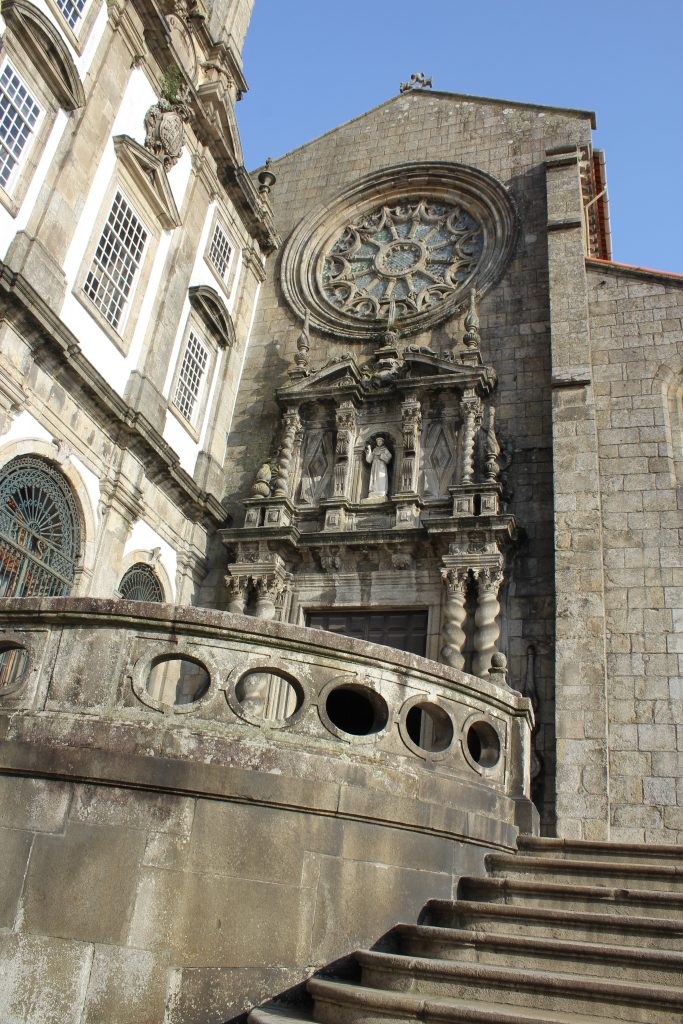
It wasn’t not allowed to take photos of the inside of the church. It was an opulent church, a lot of wood carving. 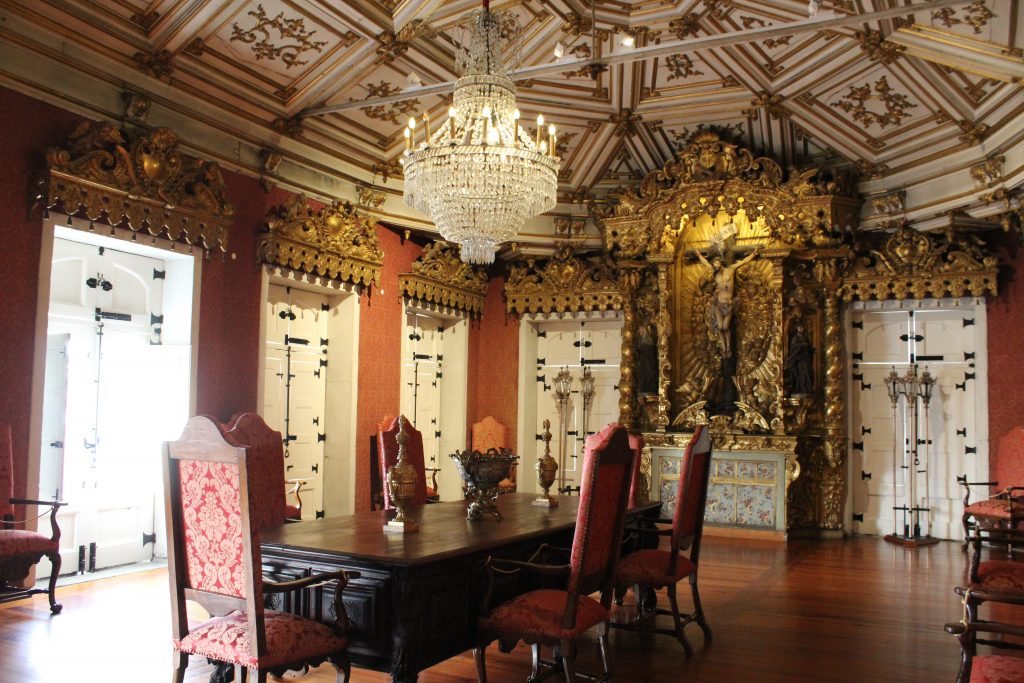
The catacombs space was large. The floor was even use to keep people.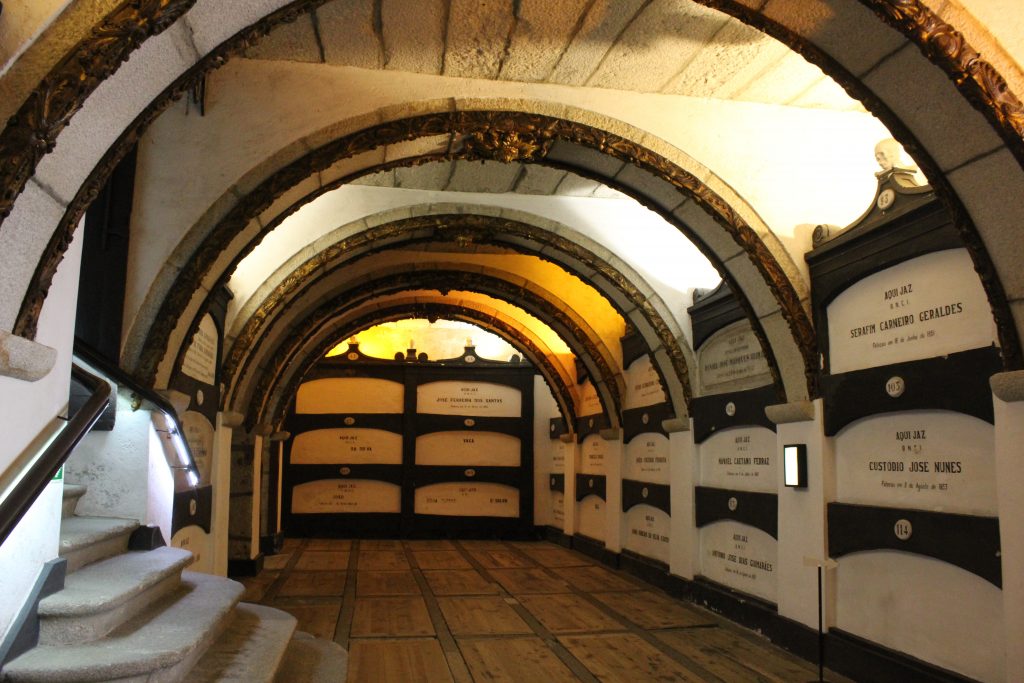

According to the guy in the giftshop, the church only buried “important / wealthy” people here. Across the street (in the image below), there is a smaller church where the working class was kept. 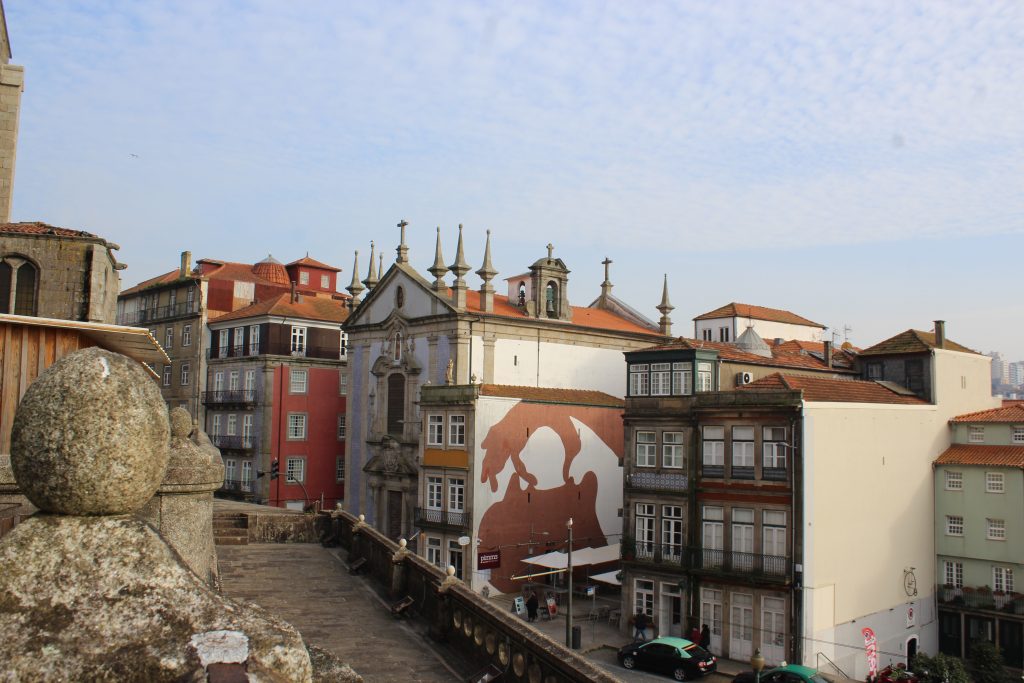
The food in general was great. unfortunately, I was not able to change my mind on bacalao, I am still not a fan.
